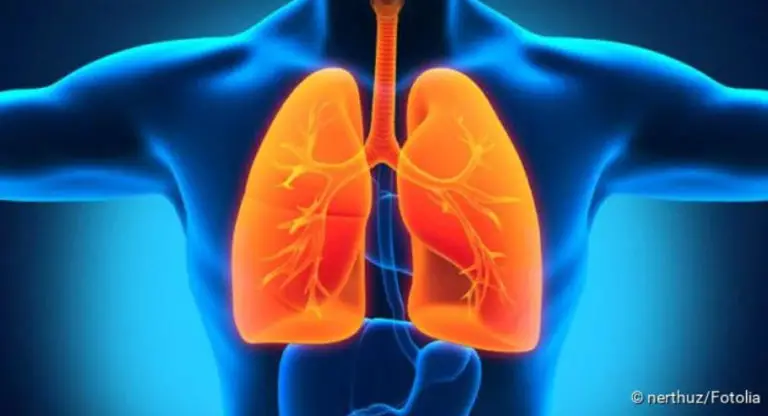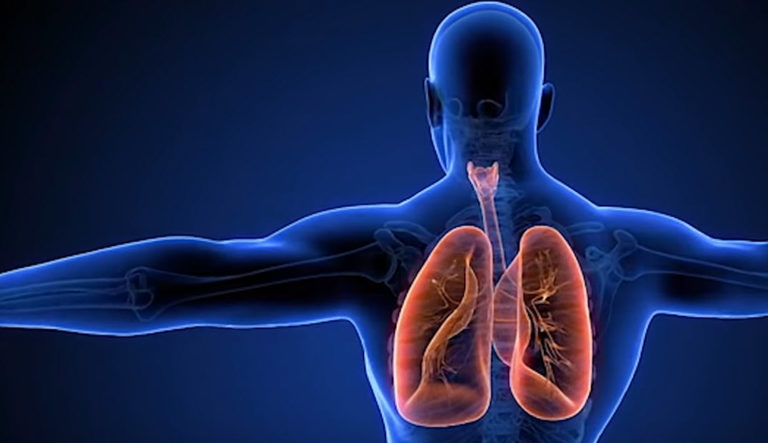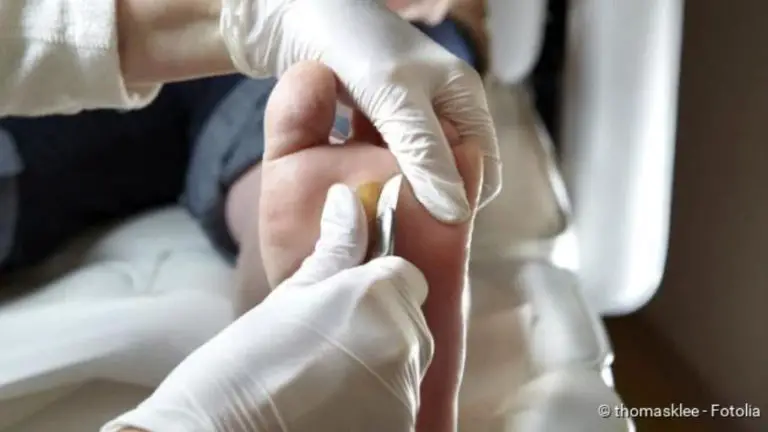Food poisoning: symptoms, causes, treatment
Food poisoning: symptoms, causes, treatment

Food poisoning is caused by the consumption of food that is spoiled by poisons or pathogens (such as bacteria). Typical symptoms are stomach pain, diarrhoea and vomiting. Mild food poisoning usually heals on its own within a few days. In more severe cases, however, patients must be treated in hospital. Read here which symptoms food poisoning causes, how it is treated and how it can be prevented!
Brief overview
- What is food poisoning? Strictly speaking, this means poisoning through the consumption of food that is spoiled by toxins. In a broader sense, food infection (consumption of food that is spoiled by pathogens) is also referred to as food poisoning.
- Causes: Toxins (food poisoning in the narrower sense); bacteria (as in salmonella poisoning, listeriosis, botulism), fungi, viruses or parasites (food poisoning in the broader sense or food infection)
- Symptoms: mostly nausea, vomiting, diarrhoea, abdominal cramps; depending on the trigger, often other complaints
- Treatment: depending on the cause and severity of the food poisoning. Generally drink a lot, eat bland foods. Possibly take medication (remedies against vomiting and diarrhoea, antibiotics, antidotes to certain toxins, activated carbon), possibly pump out stomach.
- Prognosis: Food poisoning usually heals itself within a few days. Serious cases as well as children and elderly people may have to be treated as inpatients. Some forms of food poisoning are life-threatening, for example some mushroom poisoning and botulism.
- Prevention: ensure fresh products and hygiene in the kitchen; avoid raw food if possible; drink only clean water;
Food poisoning: symptoms & causes
The symptoms of food poisoning (including food infection) can vary somewhat depending on the cause. Classic signs, which almost always occur, however:
- Nausea
- Vomiting
- Diarrhoea
- Abdominal cramps
In most cases of food poisoning, the symptoms become apparent within minutes to hours after consumption of the spoiled or toxic food. In rare cases – such as an infection with the Campylobacter bacterium – this so-called incubation period can last several days.
The symptoms of food poisoning are often only moderately pronounced and disappear on their own after a few days. Sometimes, however, severe poisoning occurs with very pronounced symptoms such as violent vomiting, severe bloody diarrhoea or more than ten diarrhoea cases per day. At the latest then you should definitely see a doctor!
Food poisoning by pathogens
In case of food poisoning by pathogens (food infection), the exact symptoms depend on the type of pathogen. Important infections are samonellosis, listeriosis and botulism:
Salmonellosis
Salmonella poisoning is caused by bacteria from the salmonella group. The pathogens are usually ingested via raw or insufficiently heated animal food. The consumption of raw eggs in particular has a high risk potential. Symptoms of salmonellosis are, in addition to the above-mentioned complaints, especially chills and fever. Sometimes, however, an infection with Salmonella is asymptomatic.
Listeriosis
This is an infection with bacteria of the genus Listeria. These can be found in animal foods such as raw milk, soft cheese (for example Roquefort and Brie) or raw meat. They can also multiply in vacuum packs. Low temperatures (for example in the refrigerator) do not inhibit the growth of these bacteria.
A Listeria infection usually does not cause symptoms in otherwise healthy people. When complaints occur, they are often joint and muscle pain, fever, vomiting and diarrhoea. Further complaints are possible if the listeria spreads to other organ systems. It is particularly dangerous if they penetrate the brain and cause meningitis. This is manifested by high fever, headache and stiff neck. Listeria can also enter the blood system and cause blood poisoning (sepsis). Inflammation of the inner wall of the heart (endocarditis) or peritonitis can also be the result of an infection with Listeria.
Infants, the elderly and people whose immune systems are severely weakened by other diseases or medication are particularly susceptible to such serious complications. Pregnant women and their unborn children are also particularly at risk: Listeria-induced food poisoning in the mother-to-be can trigger miscarriage or stillbirth.
Botulism
This rare but very dangerous infection is caused by bacteria of the type Clostridium botulinum (Clostridia). It is usually caused by the consumption of contaminated food – especially packaged products whose packaging (like canned food) is inflated are suspect. Homemade canned food and pickled vegetables and fruit are also possible triggers of Clostridium-induced food poisoning. Symptoms of the infection affect the nervous system because it is attacked by the bacteria:
About 20 to 36 hours after the consumption of Clostridium contaminated food the first paralysis of the eye muscles occurs. Later, the entire skeletal musculature weakens, speech disorders, a slowed heartbeat and lowered blood pressure as well as constipation and urinary retention occur. Also typical are a dry mouth, swallowing and vision problems, dilated pupils, drooping eyelids and reduced reflexes.
It becomes dangerous when nerves responsible for breathing are affected. Without mechanical ventilation, botulism can then lead to death by respiratory arrest. Patients must therefore always be treated in hospital.
Other bacterial causes and their symptoms
There are many other pathogens that can be responsible for a food infection. Here are some examples and typical symptoms of the infection:
- Escherichia coli: The bacterium E. coli is mainly found in raw beef and raw milk. Human-to-human transmission is also possible. An E. coli infection initially triggers watery and later bloody diarrhoea.
- Staphylococcus: These bacteria can get from hands into food when handling food uncleanly in the kitchen and thus cause food poisoning (heating the food does not kill the germs) Symptoms are low temperature and circulatory weakness.
- Yersinia: The transmission of the bacterium Yersinia usually occurs through contact with infected animals or the consumption of contaminated animal food. Common symptoms of the disease are headaches, chills and fever.
- Campylobacter: The bacterium Campylobacter is mainly found in insufficiently heated poultry meat and raw egg products. It can be killed by cooking food. Symptoms of food poisoning by Campylobacter are high fever, headache, fatigue and watery diarrhoea.
- Shigellen: These germs are more common in warm areas with inadequate hygiene standards, where faeces or sewage cause contamination of food or drinking water. Food poisoning caused by Shigella causes cramp-like abdominal pain, painful bowel movements and diarrhoea.
Fungal food poisoning
The consumption of poisonous mushrooms (such as toadstool, tuber leaf fungi) causes fungal food poisoning. Symptoms such as stomach pain, nausea and vomiting occur soon after the mushroom meal. Other possible symptoms are sweating, chills, dizziness, loss of consciousness, disturbed perception, shortness of breath, palpitations and/or balance problems. The extent of the symptoms of poisoning depends on the type and quantity of the mushroom poison ingested.
The alarmed doctor should be informed about which mushrooms have (presumably) been consumed. It is also very helpful if a remainder of the meal or vomit has been stored so that the doctor can analyze these samples.
Symptoms of poisoning can also occur when mouldy food is consumed. Thus, some molds produce aflatoxins, which cause severe damage to the liver.
Food poisoning by fish, mussels, crabs
Fish poisoning can occur after the consumption of fish, mussels (mussel poisoning) or crustaceans. Sometimes the reason is that the water inhabitants have been stored incorrectly or for too long, so that bacteria have multiplied in them, which then causes symptoms of poisoning.
Food poisoning after a fish meal can also be triggered by ciguatoxin. This is a toxin that is produced by aquatic single-cell organisms that can enter the food fish via the food chain. Poisoning manifests itself in nausea, vomiting and diarrhoea.
Sometimes the trigger of food poisoning is also a naturally poisonous fish. These include puffer fish, for example. They contain the strong nerve poison tetrodotoxin. It can cause paralysis of the skeletal and respiratory muscles and thus quickly lead to death! Only when prepared correctly are puffer fish meals free of the nerve poison.
Food poisoning by plants
Food poisoning by plant toxins occurs mainly in small children – they often put plant parts in their mouths out of curiosity and unnoticed by adults. Various plants produce toxins to protect themselves from predators. They are called poisonous plants if they are poisonous to humans and animals even in small quantities. Examples of poisonous plants and the symptoms of poisoning caused by them are
- Ivy: in high doses stomach ailments and fever
- Yew: circulatory disorders, respiratory paralysis, clouding of consciousness
- Gold rain (Koelreuteria paniculata): Paralysis to respiratory arrest
- Angel trumpet: limitation of consciousness, heart failure
- Autumn crocus: Nausea, respiratory paralysis
- Lily of the valley: life-threatening heart rhythm disturbances
- Wolfsbane: hypothermia, cramps, cardiac or respiratory paralysis, death
- Foxglove: heart rhythm disturbances, inflammations, nausea, vomiting, visual disturbances, hallucinations
- Henbane: hallucinations, heart problems
- Potato: poisoning only when using the leaves as tea or eating green potatoes: diarrhoea, respiratory paralysis
- Tomato: Danger of death when using the leaves as tea
Call the emergency doctor immediately if you think that you or your child has eaten poisonous plants!
Food poisoning by pollutants
If food is contaminated with toxic metals or metal compounds (lead, cadmium, mercury, zinc, etc.), consumption can also cause symptoms of poisoning. This is particularly true if someone consumes a larger quantity or repeatedly consumes smaller quantities of the contaminated food. The type and severity of the symptoms depend on the pollutant and the amount absorbed. For example, organic lead compounds can disrupt the central nervous system, causing hallucinations, excitement and cramps. Late effects can also include Parkinson-like symptoms and paralysis.
Food poisoning: risk factors
Food poisoning by pathogens (food infections) often occurs as local epidemics, for example when the canteen food or the food on a cruise ship is spoiled. Especially in the summer months, such food poisonings become more frequent because the pathogens multiply faster in warm temperatures.
In some countries the risk of food poisoning is higher than in others. On the one hand, this is due to different standards of hygiene in the cultivation, preparation and sale of food. On the other hand, the climate plays a role: tropical and subtropical regions have temperatures at which bacteria can multiply particularly well. Holidaymakers in the Mediterranean region, for example, should pay particular attention to adequate hygiene standards in order to avoid bacterial food poisoning.
Viruses can also enter the body through food and cause gastrointestinal problems. However, doctors do not then speak of food poisoning, but of a viral infection caused by contaminated food. Contamination may occur because food has been in contact with infected faeces or contaminated water or has been prepared by infected persons. Meat and offal of infected animals may also be a source of infection.
Viruses cannot multiply in food and do not cause spoilage. However, they can remain infectious over a long period of time. It is not possible to tell from the outside whether food is contaminated by viruses. Contamination cannot be detected by taste or smell either. Ready-to-eat cold dishes such as salad, fruit, desserts and baked goods are particularly dangerous.
Virally caused gastrointestinal complaints often occur in community facilities such as kindergartens, schools, retirement homes and hospitals.
Food poisoning: common causes and how to avoid them
| Cause | Source of danger | Prevention |
| Bacteria | raw meat, raw eggs, milk, soft cheese/food made from raw milk, contaminated drinking water | Store food correctly and prepare it under hygienic conditions. Store leftovers of prepared food in a cool place and heat up thoroughly again before consumption. Avoid raw foods as much as possible. In countries with poor hygiene standards, eat only cooked, fried or peeled food and drink only boiled water or bottled water sealed in bottles; avoid ice cubes. |
| Toxins | Fish, mushrooms, plants | Only eat mushrooms that you know well. In the case of fish/seafood, the cold chain between catch and consumption must not be interrupted. Watch out for smell. If necessary, do without raw fish completely. In households with small children, avoid poisonous indoor and garden plants if possible. Watch what the little ones put in their mouth. |
| Metals | Baking powder, processed cheese, coffee whitener, fruit, vegetables, canned food, oysters, fish, mushrooms, cereals, rice products, drinking water | Eat only small amounts of potentially contaminated food (especially for children). Wash or peel fruit thoroughly. Enquire about the catching/cultivation area. Throw away damaged / inflated preserves. |
| Moulds | Rye, barley, dried fruit, nuts, corn grains (aflatoxin) | Aflatoxin: Consume only products from the EU or tested products. Watch out for mould stains (white to greenish-grey and hairy) on the food. Do not drink from opaque containers. |
| Viruses (not classical food poisoning, but viral infection) | Contamination of food and drinking water by faeces | Peel or thoroughly wash fruit and field crops (lettuce, tomatoes etc.). In countries with poor hygiene standards, eat only cooked/fried food and drink only boiled water or bottled water sealed in bottles; avoid ice cubes. |
Food poisoning: treatment
In general, the treatment of food poisoning depends on the cause of the symptoms. Under certain circumstances, treatment in hospital may be necessary, for example in patients with a weakened immune system or botulism.
General measures
General tips and household remedies often help with minor complaints. For example, if you have diarrhoea, you should drink a lot of water to compensate for the loss of water and salts. Suitable drinks include water and tea with sugar. An electrolyte solution from the pharmacy is recommended, especially in cases of severe diarrhoea. Alternatively (for example when travelling) you can prepare a salt and sugar solution yourself: To do this, add five tablespoons of sugar, one and a half tablespoons of table salt and one glass of packed orange juice to one litre of packaged or boiled water. Mix the whole thing and drink it in sips.
Even if you do not feel like eating due to diarrhoea and vomiting, you should not completely avoid food for a long time in case of food poisoning. In the first few days, doctors recommend easily digestible foods such as rusk, bananas, rice, white bread and broth. On the other hand, you should avoid foods and drinks that contain acids, are difficult to digest and irritate the mucous membranes (fruit juices, raw vegetables, dairy products, fatty foods, soft drinks, coffee, alcohol, etc.).
Once the symptoms of food poisoning have subsided, you should continue to be careful about what you eat for some time. The gastrointestinal tract is still affected and needs some time to fully recover.
Medication and more
In principle, vomiting or diarrhoea in the case of food poisoning can be alleviated with the help of special medication: Antiemetics such as metoclopramide help against nausea and vomiting, while antidiarrhoeal agents such as loperamide stop diarrhoea. However, such drugs are not generally recommended. The purpose of diarrhoea and vomiting is to quickly remove the causative pathogens or toxins from the body. The doctor will therefore prescribe antiemetics and antidiarrhoeal agents only in certain cases, such as in cases of severe vomiting or more than ten cases of diarrhoea per day.
Depending on the cause of the food poisoning, other medications and therapeutic measures may also be used. For example, patients with bacterial food poisoning sometimes receive antibiotics. This is the case, for example, with listeriosis and sometimes also with salmonellosis.
Botulism requires treatment in the intensive care unit. The patients receive an antidote (antitoxin) to the botulinum toxin as quickly as possible. They may also have to be given artificial respiration.
Specific antidotes are also available for some fungal toxins. In addition, in the case of fungal food poisoning, the affected person often has their stomach pumped out.
Sometimes activated carbon (medicinal charcoal) is also administered in cases of food poisoning. It binds bacteria and toxins in the digestive tract. Everything together is then excreted with the stool.
There is evidence that probiotics can shorten the duration of infection-related diarrhoea. Probiotics are special microorganisms (such as lactic acid bacteria) that can settle in the intestine and displace diarrhoea pathogens. They are added to some foods (such as yoghurt) and are offered as capsules and powders.
Food poisoning: Prevention
In order to avoid food poisoning, food hygiene and sufficient treatment of drinking water are the most important requirements. Every individual can contribute to this:
- Wash fruit and vegetables thoroughly before consumption or preparation.
- Wash hands, dishes and kitchen utensils thoroughly before, between and after cooking (especially when preparing raw meat or fish).
- Always clean and regularly replace dishcloths and cleaning cloths used in the kitchen.
- Wear clean clothes and no jewellery when cooking.
- Fry fish and meat dishes well.
- Do not eat raw milk products, raw fish and raw meat.
- Store food in well sealed containers and at suitable temperatures (e.g. dairy products in the refrigerator).
- Observe the expiry date of food.
- Avoid pets, rodents and insects in the kitchen area.
- Dispose of food if pets, insects or harmful rodents (such as rats, mice) have had contact with it.
- Dispose of packaging and condensation water of meat products immediately.
- Throw away food that tastes strange or unusual.
In order to avoid food poisoning from frozen foods, you should take care to interrupt the cold chain as briefly as possible. Bring frozen products home quickly after shopping and use a cooler bag when outside temperatures are higher. Frozen food should be defrosted overnight in the refrigerator (not at room temperature). This is particularly important for fish, as bacteria can multiply well in thawing water and cause food poisoning. The fish is washed before preparation.
When preparing dishes containing raw eggs (tiramisu, mayonnaise, etc.), you should take special care to use only fresh eggs.
Inflated packaging or bulging lids on tins may indicate contamination with Clostridium botulinum. Such foods must never be consumed, otherwise serious food poisoning (botulism) may occur.
Holiday in southern countries
In some countries the hygiene standards and the quality of drinking water are not as good as in this country. This is the case, for example, in many popular holiday regions in the Mediterranean. Therefore, measures to prevent food poisoning are particularly important there.
In such countries, for example, you should, if possible, avoid dishes that are raw, prepared with unboiled water or served only lukewarm in a restaurant. The best thing to do is to follow the saying: “Peel it, boil it, cook it or forget it!” This means that one should avoid all foods that have not been peeled, cooked or fried.
If there is any doubt about the purity of tap water, you should only use boiled water or bottled water for drinking and brushing your teeth.
Food poisoning: tests and diagnosis
If the symptoms of (suspected) food poisoning such as diarrhoea and vomiting do not disappear on their own within a few days, you should see a doctor. In the case of very severe symptoms and in children and the elderly, suspected food poisoning should generally be clarified by a doctor. In such cases, the loss of fluid and electrolytes through diarrhoea and vomiting can quickly become dangerous.
In most cases, the doctor will diagnose “food poisoning” on the basis of the patient‘s medical history (anamnesis) and the symptoms. The classic constellation of symptoms (nausea, vomiting, diarrhoea, etc.) and the report of the affected person on the consumption of mushroom dishes or unusual or strange-tasting food or drinks already provide strong indications of poisoning.
In severe cases of food poisoning with severe diarrhoea and/or blood in the stool, the doctor sends stool and blood samples to the laboratory to have the pathogen accurately identified. If botulism is suspected, one checks whether the botulinum toxin can be detected in the stool or vomit of the patient. Since the result is only known after about 24 hours, but botulism is very dangerous, the appropriate therapy is usually started before this time to be on the safe side.
Often a special food (mushroom dish, canned fruits etc.) is suspected to have caused the food poisoning right from the beginning. The doctor can then send random samples of the suspect food to a laboratory to detect any pathogens or toxins in it. This can be very important for the treatment (e.g. exact knowledge of the poisonous mushroom).
Obligation to notify
In the United States , for example, as indicated by federal agencies. In the European Union, to put another example, there is an obligation to report any food poisoning caused by bacteria. The food suspected to be the cause is analysed by food testing institutes. If the suspicion is confirmed, the contaminated food can be withdrawn (complete batch recall) from the market (publication of a food warning) to avoid further cases of food poisoning. The competent authorities, food chains and private individuals may submit suspect foods for analysis.
Food poisoning: course and prognosis
Most cases of food poisoning are uncomplicated. If a food poisoning only occurs with diarrhoea and without fever or blood in the stool, it usually subsides on its own within a few days. In individual cases, the duration and severity of the symptoms depend on what exactly causes the poisoning (bacteria, toxin, etc.), how much of it has entered the body and the general state of health of the person concerned.
It becomes dangerous if the loss of fluid and electrolyte due to diarrhoea and vomiting is not quickly compensated. This is often the case with small children and older people. They usually have to be treated in hospital: With the help of infusions, missing fluids and lost salts (electrolytes) can be quickly replaced in small and old patients.
Botulism is a life-threatening form of food poisoning: Untreated, about half of the patients die within three to six days as a result of respiratory paralysis.



